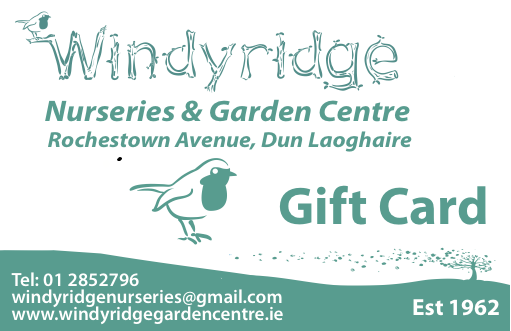Making the most of spring bulbs

The fresh mornings are back and, as we are getting ready to snuggle into the cosy season with all its treats by the roaring fire, there is a lot to plan ahead for next spring. So before we can tackle that pile of books awaiting since last spring with a lovely cup of tea, let’s put on the wellies and the woolly sweater because it is time to plant the spring bulbs!
Bulbs for Naturalising
Naturalising bulbs is a fantastic way of creating drifts of colour in spring that will just mature over time and spread with no extra work. It is always good when nature does its own thing.
You can naturalise bulbs in two settings: in the lawn, you need to choose early flowering bulbs then as you need to allow the foliage to die back before mowing, or under deciduous trees.
Suitable bulbs:
- Snowdrops (lawn and under trees)
- Crocus (lawn)
- Daffodils (lawn preferably), choose early varieties such as ‘February Gold’.
- Bluebells (lawn and woodland), be aware though that they spread considerably, so they are best on their own for a sea of blue in spring.
- Cyclamen (woodland)
Planting:
Make a hole 3 times the size of the bulb. For smaller bulbs such as snowdrops and bluebells, you can make holes with a fork. For larger bulbs, however, cut out a piece of lawn and loosen the soil under. Place your bulbs in holes 3 times the size of the bulb, cover with soil and place the peace of turf back into place.
Bulbs for pots
Typically, we choose smaller or miniature varieties for pots, even more so in low pots or bowls, these look at their best.
Suitable bulbs by flowering time (early to late):
- Snowdrops
- Crocus
- Iris reticulata
- Muscari
- Daffodils such as Tete-a-tete or Jetfire
- Tulips like Pinocchio, Little Red Riding Hood, Winnipeg, Calgary or Queensland.
Layered Planting in Pots:
As a rule of thumb, a bulb should be planted in a hole 3 times the size of the bulb itself. Consequently, the largest bulbs will be at the bottom, the smallest at the top.
It is the best way to make the most of your pot, with flower coming up continuously from early spring to early summer.
Fragrant bulbs
Scent is a must in any garden, even more so in spring when fewer blooms are out. However, with the cold still knocking on the door, it is best to keep your fragrant flowers close to the door to make the most of their enchanting perfume. Amongst, the all-time favourites, hyacinths with their powerful scent and Narcissi Pheasant’s eye (outdoor) or ‘Paperwhite’ (indoor) are certainly the best.
Unless, you prefer something a little more unusual:
- Narcissus ‘Actaea’, very similar to ‘Pheasant’s Eye’ (white with yellow trumpet) but flowering earlier in the season.
- Narcissus ‘Silver Chimes’, a lovely, white, multi-headed variety.
- Narcissi ‘Cheerfulness white’ and ‘Bridal Crown’ for their double, white flowers.
- Narcissus ‘Pipit’, a multi-headed, yellow variety.
Fragrant Tulip Varieties:
- Tulip Humilis ‘Persian Pearl’, early flowering, dwarf variety with cerise and cream petals and a yellow ring inside.
- Tulipa ‘Angelique’ and ‘Foxtrot’. These two Award winning varieties bear large, peony-like, pink flowers.
- ‘Blue Diamond’, a double flowering tulip which is actually purple.
Spectacular bulbs for a WOW effect
If you like the popular ‘Tete-a-tete’ daffodil, then you’ll love the ‘Tete de Luxe’ and the ‘Tete Boucle’. These are the double flowering versions of the all-time favourite. If you want something a little more extravagant, then the ‘Rip Van Winkle’ with its fluffy, golden-yellow heads, is for you.
On the tulip side, the dark varieties are becoming ever popular. Plant these with white flowering varieties such as Catherina or Exotic Emperor for a striking contrast.
Dark tulip varieties to try:
- ‘Queen of Night’, deep purple-burgundy almost black.
- ‘Paul Scherer’, the darkest of all
- ‘Black Parrot’, dark purple with hues of dark pink and near black edges.
- ‘Labrador’, an exquisite, burgundy, fringed variety
- ‘Jackpot’, a classic, elegant deep purple flower with white margins.
Last but not least, the beloved Alliums. These are real showstoppers and are a great feature in the garden with their monumental flowers. They give stunning colour and structure in the border in early summer (May/June) and are also pollinator friendly.
Amongst the largest alliums and the most popular:
- ‘Giganteum’, the tallest, standing at 120cm high (4ft) with round, purple flower heads of 20cm in diameter
- ‘Mount Everest’, no wonder it shares its name with the highest mountain. The white flower heads stand at 120cm high.
- ‘Purple Sensation’, the most sought after. A little smaller, it grows to 90cm (almost 3ft) and bears very dense purple heads.
General advice:
- Most of your bulbs will prefer a spot in full or dappled shade and a well-drained soil/compost.
- They should be planted in holes that are 3 times the size of the bulb itself in depth. However, when planted in pots, they don’t need to be so deep, especially hyacinths and daffodils which will grow happily for the season with the tip of the bulb at soil level.
- Plant different varieties for a long flowering season. If you plant snowdrops, crocuses, muscaris, daffodils, tulips and alliums, you will have flowers from January until June!



Leave a comment